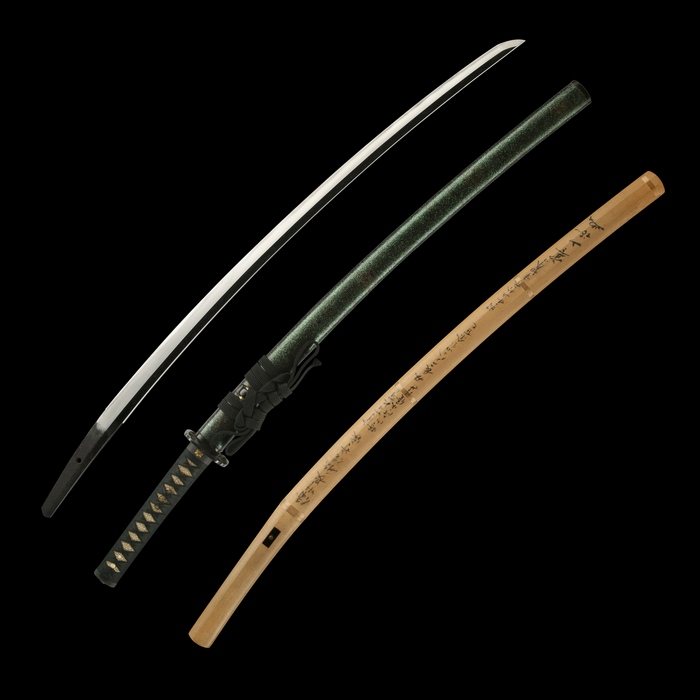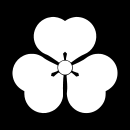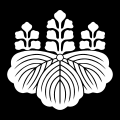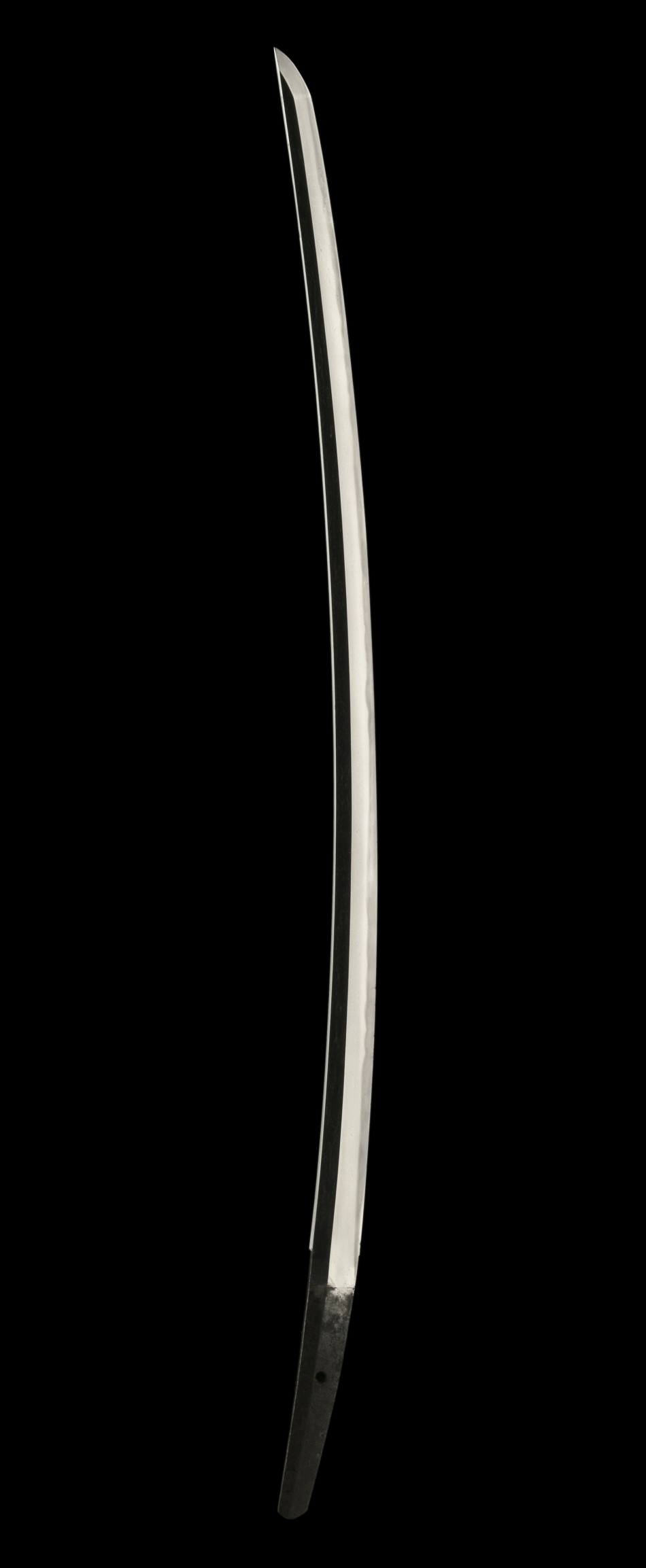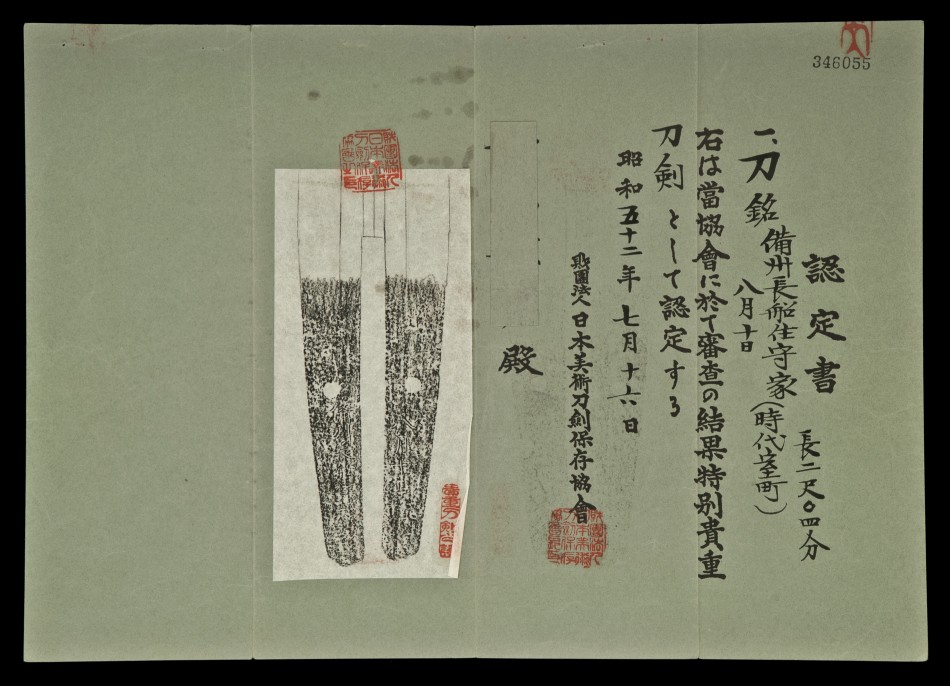A MORIIE KODACHI (Oei era 1394~1428)
Description:
This splendid kodachi was forged by swordsmith Moriie during the Oei Era, circa 1394~1428 in the early Muromachi Period. It has been certified by the NBTHK (Society for the Preservation of the Japan Art Sword), as Tokubetsu Kicho (Especially Precious).
The sword’s shape and size is referred to as a small tachi, or kodachi. It has a lovely bizen koshi-zori curvature and a ko-kissaki (a small tip).
It is a pioneering example of a sword-making evolution that saw longer tachi swords carried on horseback by the Samurai in the Kamakura and Nambokucho periods (12th to 14th centuries) being replaced by the katana, and then the infamous uchigatana (one-handed swords of the 16th century).
The fundamental difference between the longer tachi swords and katana is as follows: The tachi is slung from the body blade down, the katana, however, is carried blade up. The tachi requires two actions, the draw and then cut. The katana can perform both actions at once; making is faster and more effective in hand-to-hand combat situations.
The first katanas in the early Muromachi period were generally about 70cm to 73cm in length. The “uchigatana” or deeply curved one-handed sword of about 60cm is considered to have started in the Eikyo Era (1429~1441) and reached its final design in the early 16th century when infantry battles engulfed the nation during the Sengoku Jidai (Period of Warring States).
Yet this katana, at 61.8cm pre-dates the Eikyo Era, making it a bona fide trendsetter.
Moriie (pronounced moh-ree-yeh) hails from a distinguished line of swordsmiths – he is in fact the 5th generation to carry the name. In 1259, first generation Moriie founded the Hatakeda school in Bizen province. Moriie originally belonged to the prestigious Fukuoka Ichimonji group in the mid-Kamakura period.
The school was named after the village of Hatakeda. Later generations of the school moved from Hatakeda to Osafune village. Therefore swords such as this one bare the inscription ‘Osafune Ju’ or ‘Bishu Osafune’ meaning “resident of Osafune”.
Bizen province (Okayama prefecture) is regarded as Japan’s ‘Sword Kingdom’ as nearly half of extant swords today, both in quantity and quality were produced in Bizen.
On the opposite side to the signature on the nakago, the sword is dated “10th day of the 8th month”. This date holds significant meaning in Japan according to the Shitenno Temple in Osaka. Since ancient times, if one prays on August 9th or 10th, the Goddess Kannon (Deity of Mercy) will grant the equivalent of 1,000 days of blessings upon thee.
Of particular interest, Dr. Kanzan Sato, founding member of the NBTHK signed the sword’s protective magnolia scabbard (shirasaya) in the spring of 1978 citing his opinion that this particular work of Moriie was “Yushu” meaning ”excellent”.
Renowned experts of Japanese sword such as NBTHK’s Tanzan, Kunzan and Dr. Kanzan would provide signed attributions directly on the shirasaya (known as ’sayagaki’). These opinions are highly regarded and prized by collectors worldwide.
The koshirae (mounting) for the sword is delightful. The twinkling saya (scabbard) gets its brilliance from the sprinkling of several dustings of crushed mother-of-pearl – a technique that involves the skillful application of repeated layers of Japanese urushi (lacquer) over many weeks.
This saya was made during the Meiji period (1868-1912). In fact, the saya itself is dated at the mouth of the piece, which is very unusual.
On the saya, there is a featured kamon (family crest) that looks similar to a three-leaf clover. This kamon was held by Morikawa Echizen no Kami. He was esteemed court judge called “Go-Bugyō” (or Five Commissioners) in Yamashiro province, currently modern-day Kyoto.
The Go-Bugyō was an administrative organ of feudal Japan that later evolved into the Go-Tairō (Council of Five Elders). Toyotomi Hideyoshi established it when he became kampaku (Imperial regent) in 1585. The Commissioners were in charge of governing the capital city of Kyoto and the surrounding areas.
The tsuba (guard) is made of Kaga Zougan (damascening). This is a unique Japanese art form of inlaying gold into darkly oxidized steel backgrounds to produce intricate geometric patterns. It was perfected in Kaga province (Kanazawa), an area renowned for kinpaku (gold leaf).
In fact, this sword was made during the time the infamous Kinkakuji temple (Golden Pavilion) was built in Kyoto (1397). This Zen Buddhist building features an exterior covered with kinpaku gold leaf from Kaga that is about 1/10,000 of a millimeter thick!
Upon close inspection of the tsuba, the kamon of the honourable Nitta Yoshisada can be seen. Yoshisada, head of the Nitta family in the early 14th century, supported the Southern Court of Emperor Go-Daigo in the Nanbokuchō period, played an instrumental role in capturing Kamakura from the Hōjō clan in 1333.
The hilt of the sword contains two sets of menuki (ornamental grips under the silk-wrapped cord) that features the distinguished kamon of the Toyotomi clan. The late great Toyotomi Hideyoshi was a daimyo, warrior, general and politician of the Sengoku Jidai (warring states period).
Toyotomi Hideyoshi succeeded his former liege lord, Oda Nobunaga, and brought an end to the Sengoku Jidai (late Muromachi period) by unifying the political factions of Japan.
Photos (click for larger view!)
*All photos taken professionally by Eric Bossick for Unique Japan
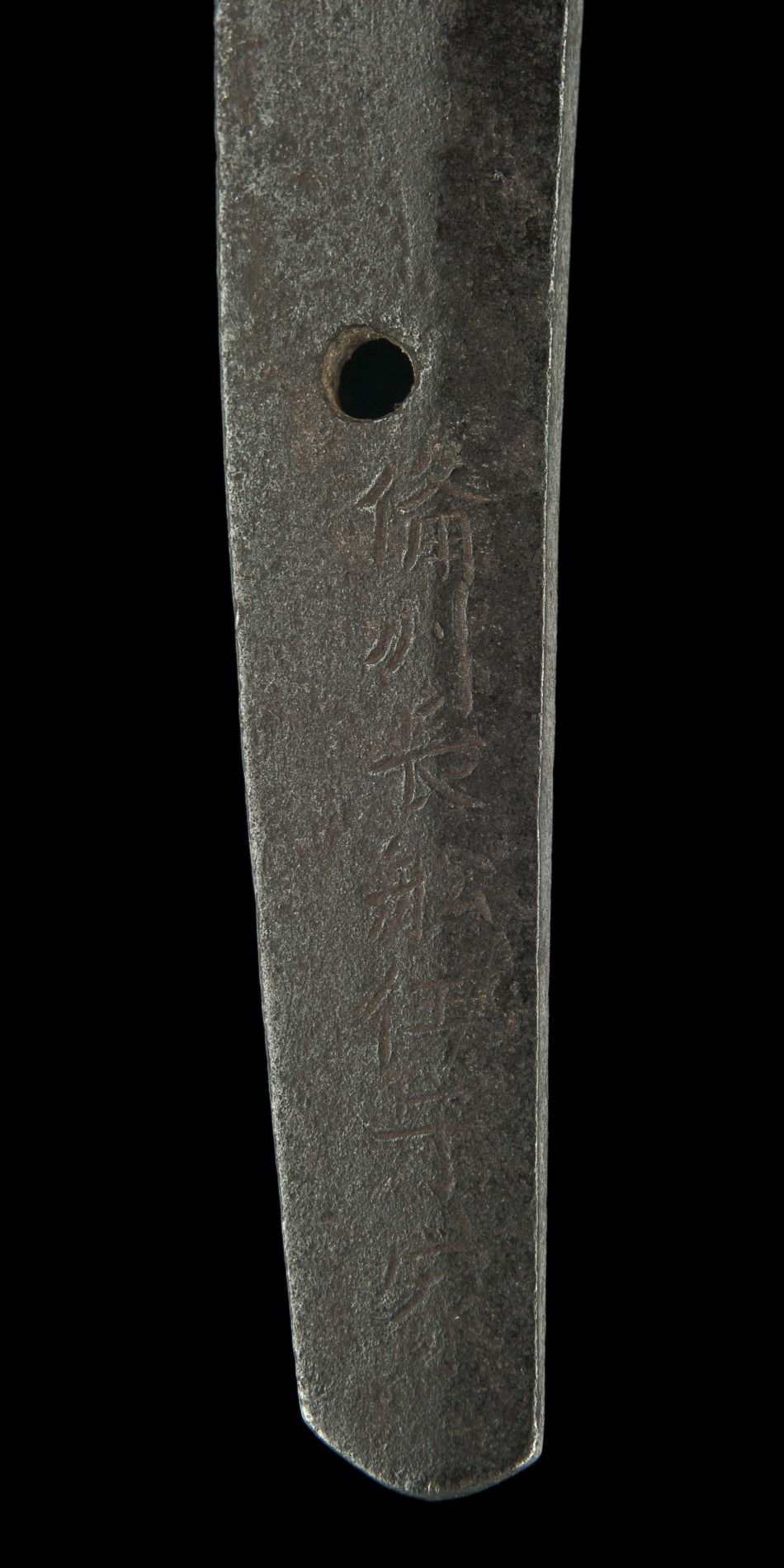
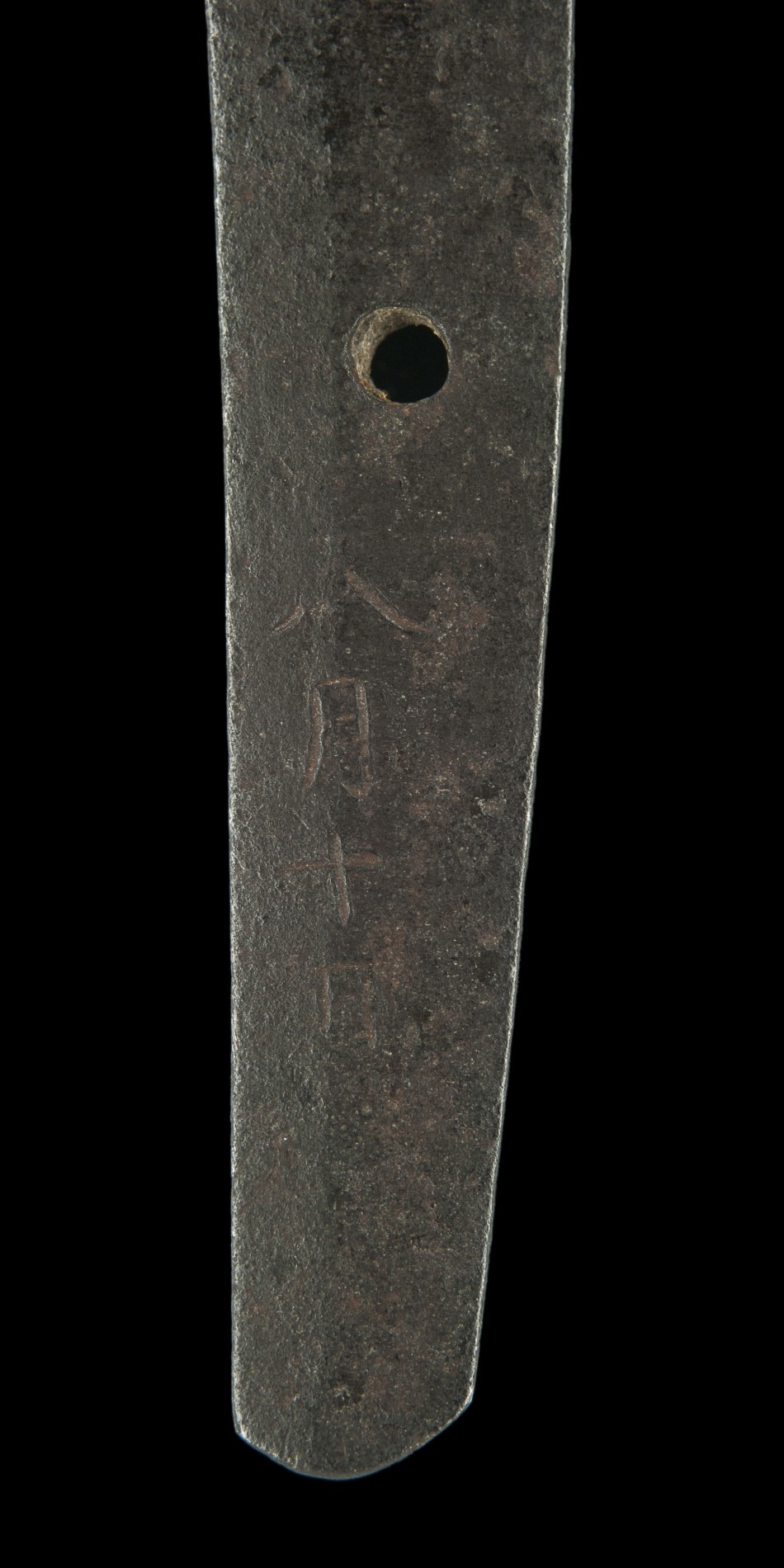
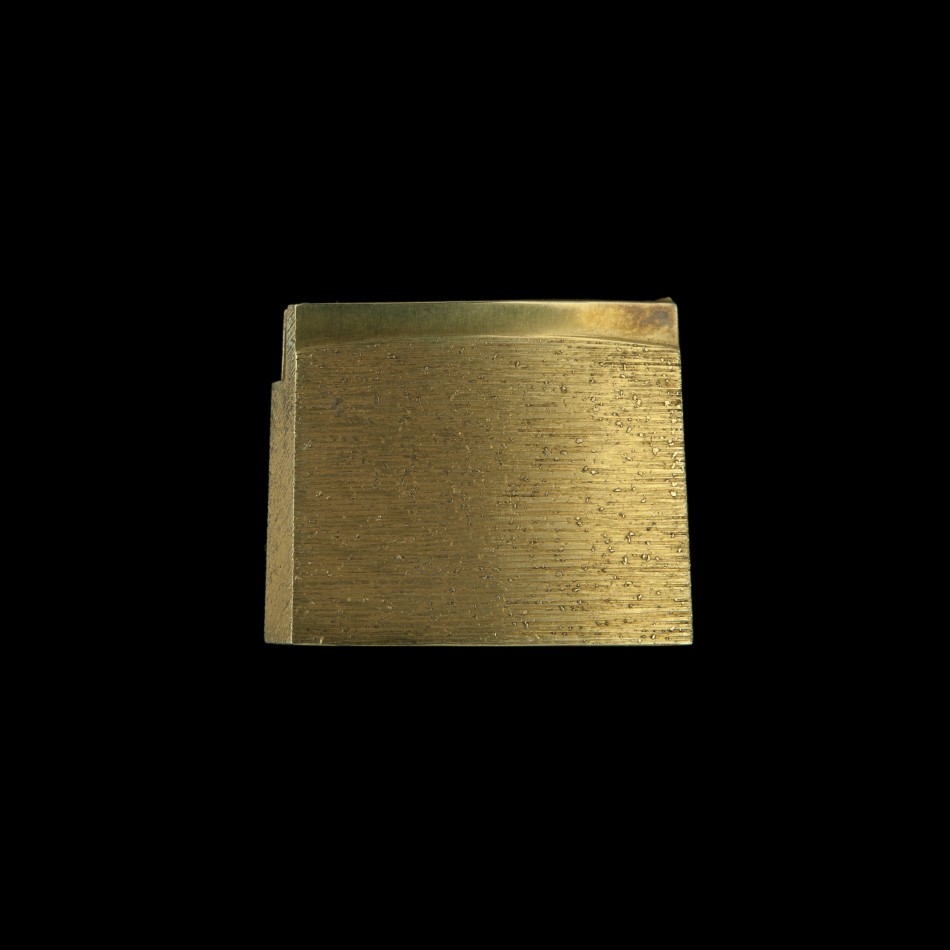
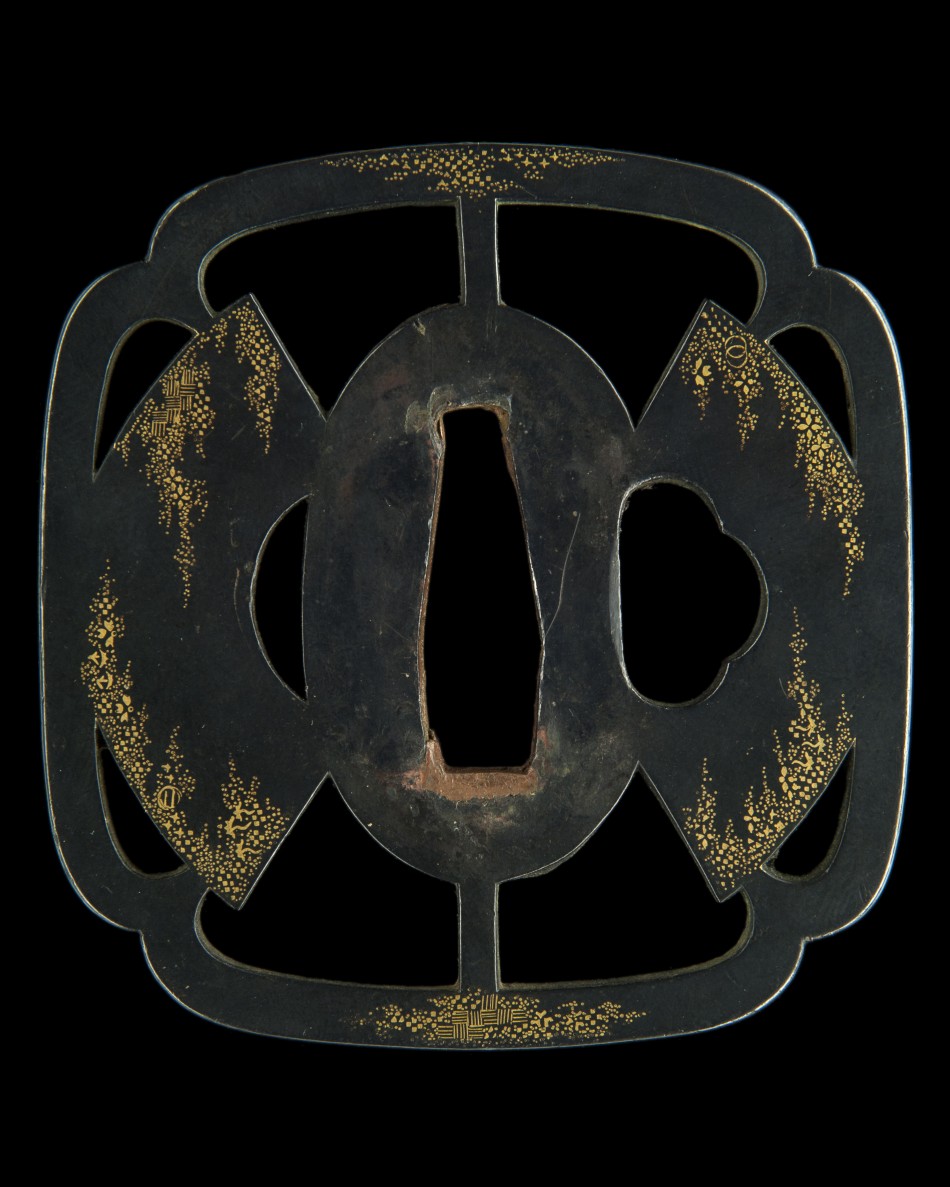
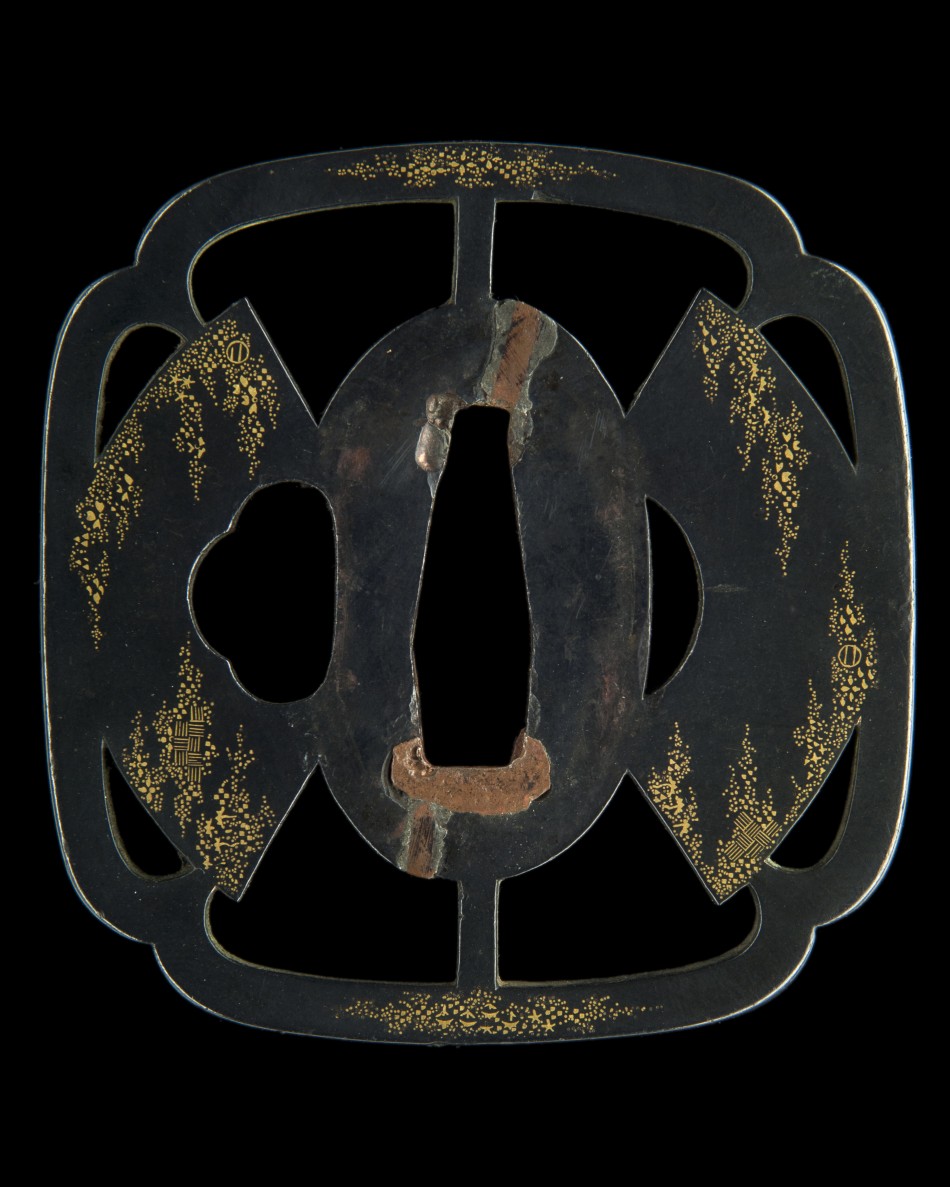
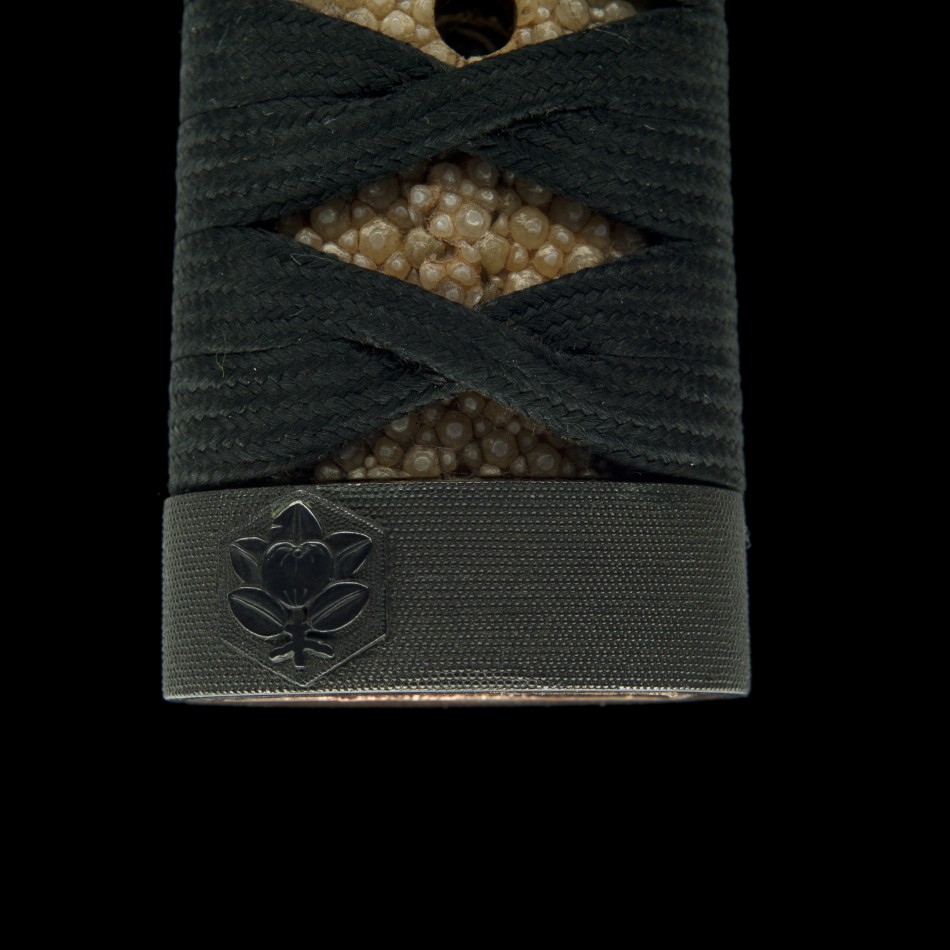
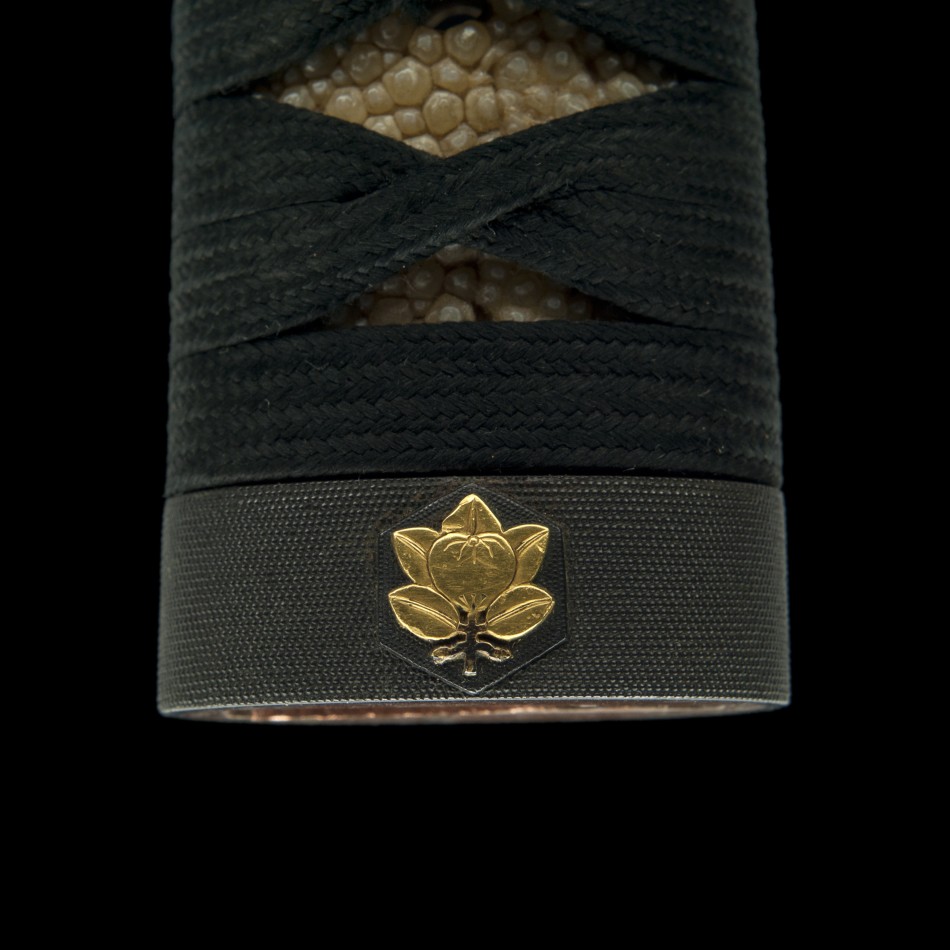
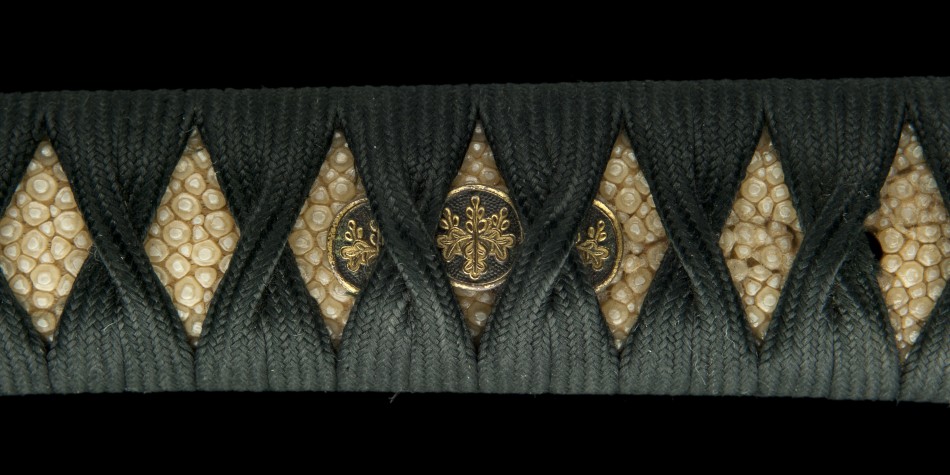
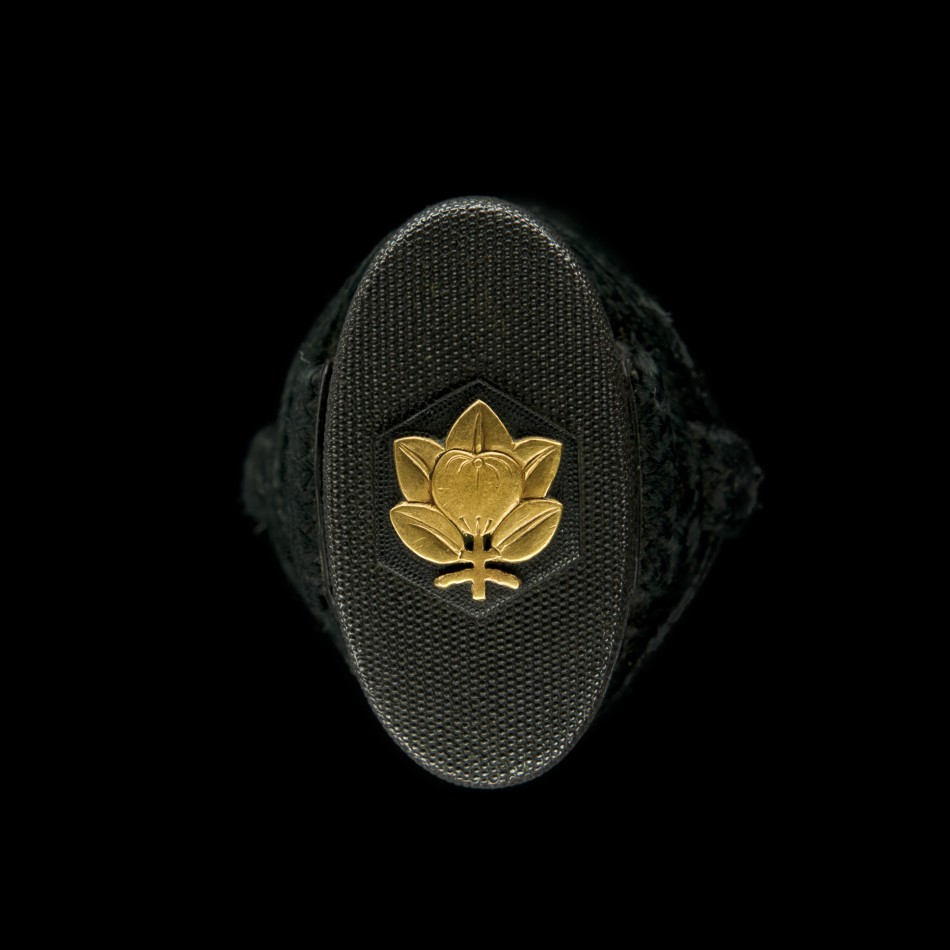
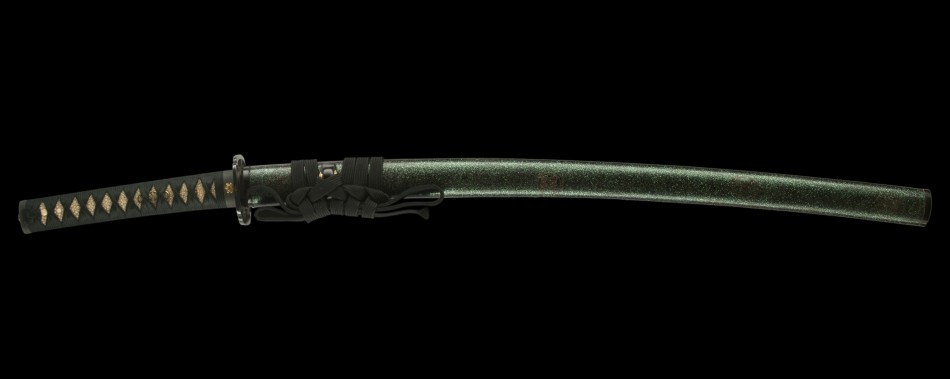
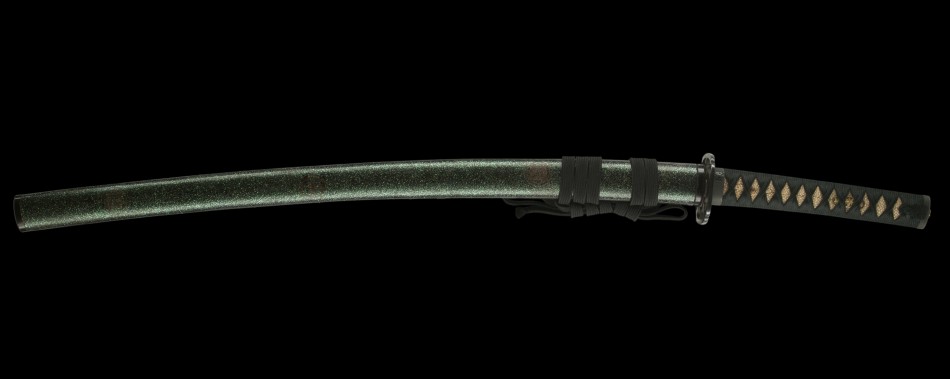
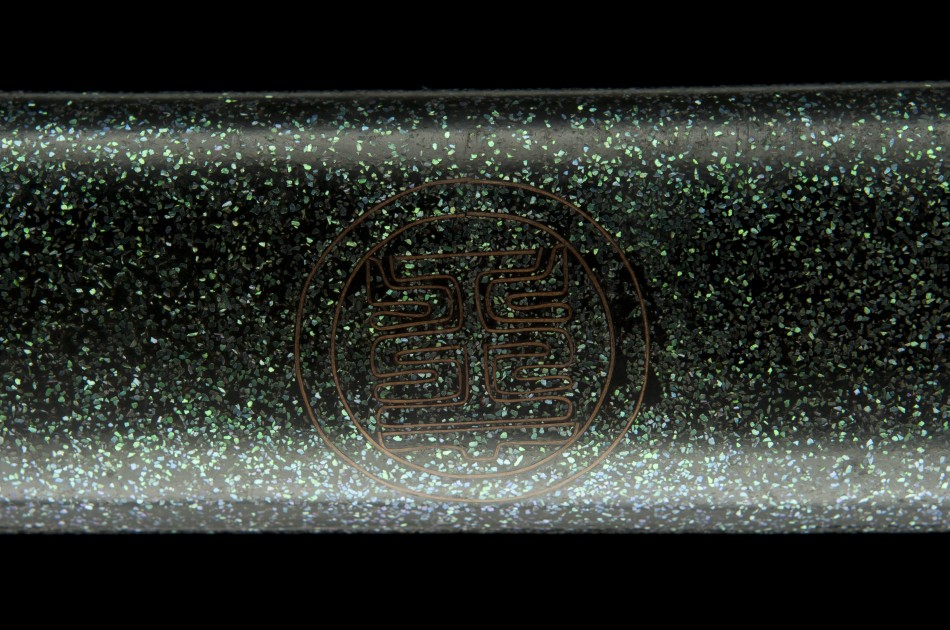
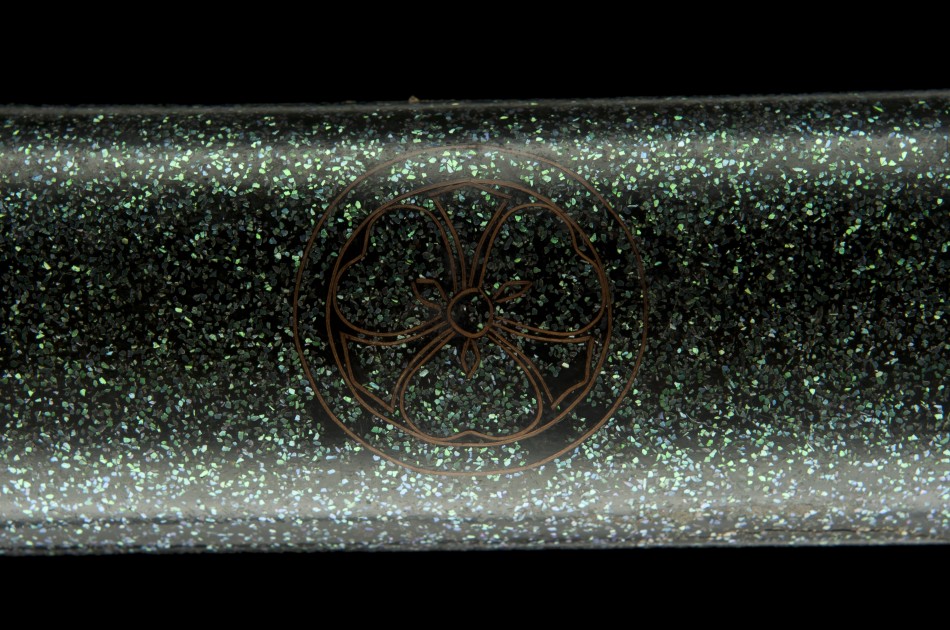
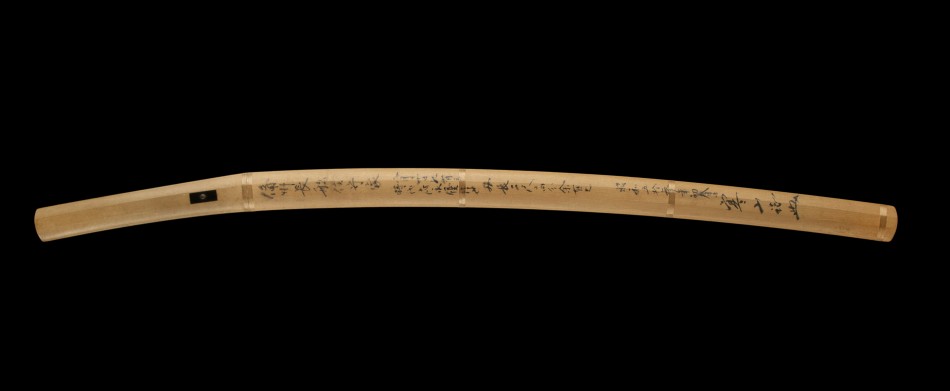

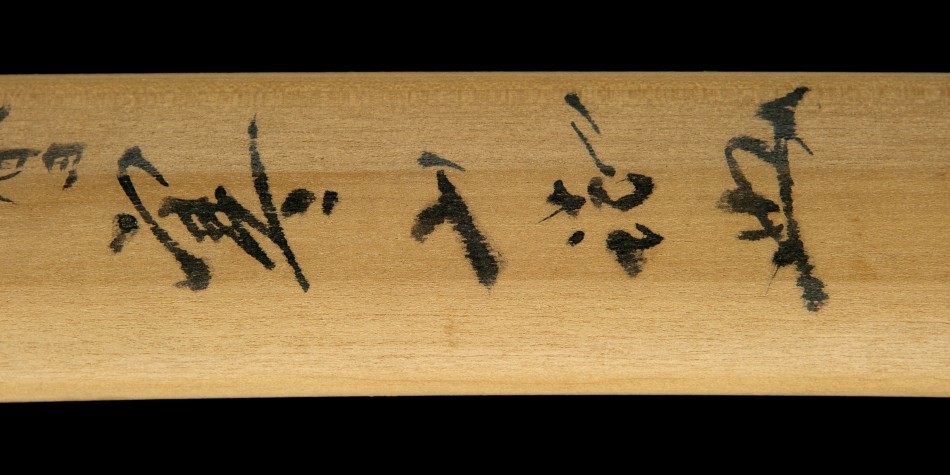
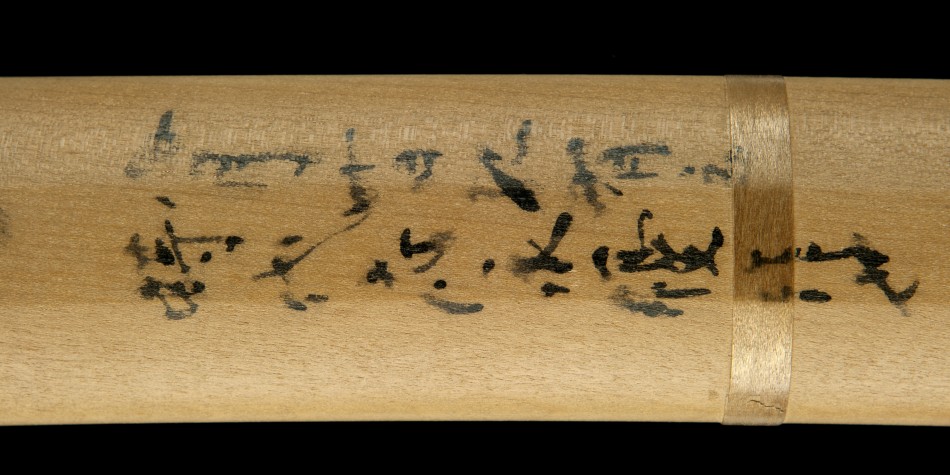

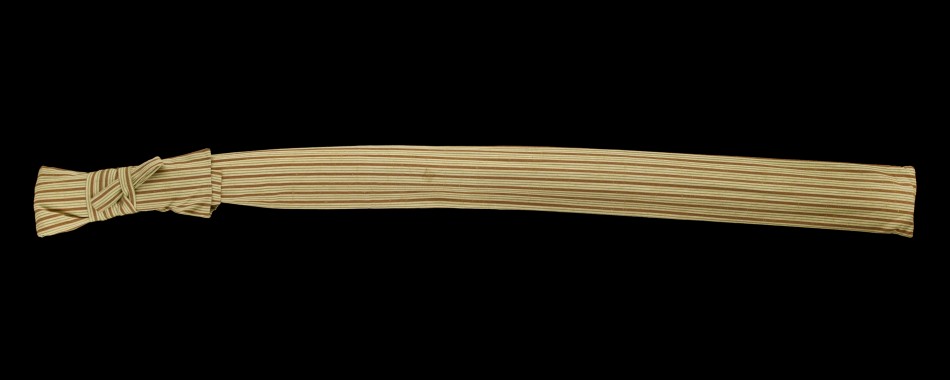
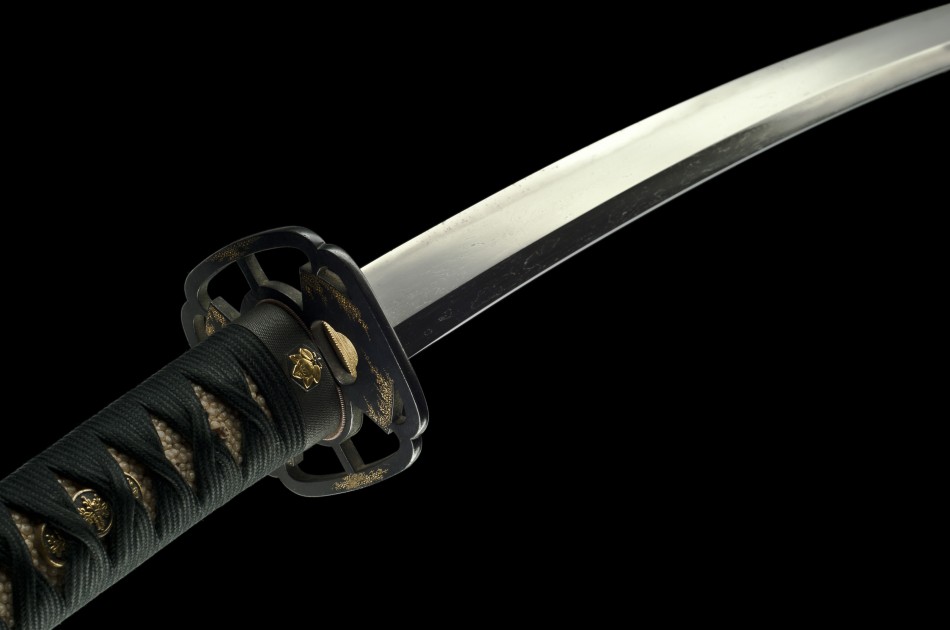
Below: NBTHK Tokubetsu Kicho certificate (A sword designated as especially precious by the Society for the Preservation of the Japan Art Sword)
Above: The sword’s torokusho (registration card).
Questions?
To request further information and/or secure ownership of this sword, please contact Unique Japan. This sword has recently been shipped from Japan to the UK. Private meetings can be arranged at the Gauntlett Gallery in Chelsea.



